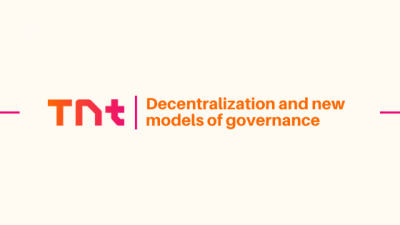THE HAGUE, NETHERLANDS – February 3, 2023 – Peercoin developers have announced the release of Peercoin v0.12 (Codename Ladybug). Describing the new release, Peercoin developers said the following:
“The new release adopts the latest developments in the blockchain space, namely Schnorr signatures and Taproot.
“Schnorr signatures offer several advantages over currently used ECDSA signatures in terms of computational efficiency, storage, and privacy. It makes transactions smaller, and verification quicker and easier. Taproot will enable sending to and spending from Schnorr public keys. In order to achieve this, a new type of ScriptPubKey called Pay-to-Taproot (P2TR) has been defined. Schnorr signatures will make Peercoin transactions cheaper and far more flexible, allowing developers to implement more complex functionalities.”
The new release also implements the following two upgrades:
RFC-0005 – Unspendable Zero Outputs
“Peercoin requires outputs to have a value of at least 0.01 PPC. However, there is one exception to this rule, 0 PPC outputs are allowed. Such zero-value outputs can have some useful applications laid out below, but an unfortunate side-effect is that they take up memory in the node’s UTXO table forever, increasing its memory usage. This RFC proposes a solution that fixes this memory leak without changing the rules for output values.”
RFC-0020 – PoW Difficulty on PoS Blocks
“Peercoin shares a mining algorithm with Bitcoin, so it is assumed that the total potential hashpower in existence greatly exceeds the hashpower targeting the Peercoin chain. As a result, miners will turn to Peercoin when profit is high, drive up the PoW difficulty, then move on to other chains. This causes a difficulty bomb in which the difficulty remains high until the next PoW block is found. Once that next block is found at the high difficulty, the difficulty immediately drops and the next several PoW blocks are easily found until the difficulty is driven up again. This boom-and-bust behavior causes long strings of PoW blocks that have low chainweight and can be orphaned by a single PoS block. By adjusting the PoW difficulty on PoS blocks found during these long periods, the difficulty bomb is diffused and PoW blocks can be found at more regular intervals.”
In addition to the new release, the developers also revealed some of their plans for 2023, indicating their interest in integrating with layer 2 technologies:
“We will begin to focus on supporting technologies that will make it easier for Peercoiners to interact with layer 2 networks, namely lightning network.
Btcd is an alternative implementation of a full node written in Go (golang). It is a required prerequisite for a number of technologies like Coinbase Rosetta and LND (lightning network daemon).
Work on the btcd port started this week. Work will be done in 3 phases. The first milestone is the ability to sync, without validation. The second is PoS validation, and the final milestone is everything the reference node can do, except minting. Minting functionality is not necessary for the port.
A previous Peercoin update made multisig minting viable, whereby an address with multiple signatures can participate in the minting process. The Peercoin Foundation has made use of this new feature by generating blocks and rewards from its multisig donation address. Continued research into ease of use will make such features accessible to all Peercoin users and may usher in a new age of advanced multisig minting paradigms to address diverse user needs.”
The developers also detailed specifics about the v0.12 upgrade, saying that a hard fork of the Peercoin blockchain will occur once the following conditions are met:
- April 17th, 2023, 12:00 UTC has passed.
- 90% of the last 1,000 blocks are from a v0.12 wallet.
A website was provided to help users keep track of the current adoption percentage.
About Peercoin
Peercoin is the original Proof-of-Stake blockchain. It is a decade old, fairly distributed, open-source and community driven project. Peercoin is designed around the concepts of energy and economical sustainability, both made possible by its innovation of Proof-of-Stake consensus.
Peercoin is a peer-to-peer protocol in the truest sense, because unlike most blockchains, all coin owners have the power to run a full node, produce blocks, and earn peercoin as a reward. Proof-of-stake is used for Peercoin’s blockchain security, while proof-of-work is only used to distribute new coins for the purpose of creating a wider distribution. Peercoin’s Project Leader Peerchemist says:
“Peercoin has the important distinction of having a continuous distribution of new coins, ten years after its launch in 2012. And Peercoin’s innovation of proof-of-stake, used to maintain chain security, makes it energy efficient and decentralized.”
About Peercoin Foundation
Immutable.place was sponsored by the Peercoin Foundation, a non-profit organization established in 2018 with the mission of promoting and supporting the continued development and overall progression of the Peercoin project.
Official Links:
Website – https://www.peercoin.net/
Twitter – https://twitter.com/PeercoinPPC
Blog – https://www.peercoin.net/blog/
Forum – https://talk.peercoin.net/
Telegram – https://telegram.me/peercoin
Discord – https://discord.gg/m294ReV
Foundation – https://www.peercoin.net/foundation
Contact Information:
Email: [email protected]
Information contained on this page is provided by an independent third-party content provider. Binary News Network and this Site make no warranties or representations in connection therewith. If you are affiliated with this page and would like it removed please contact [email protected]



Comments